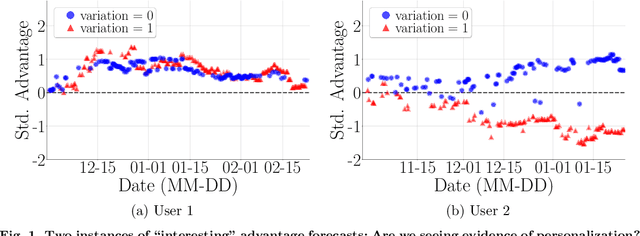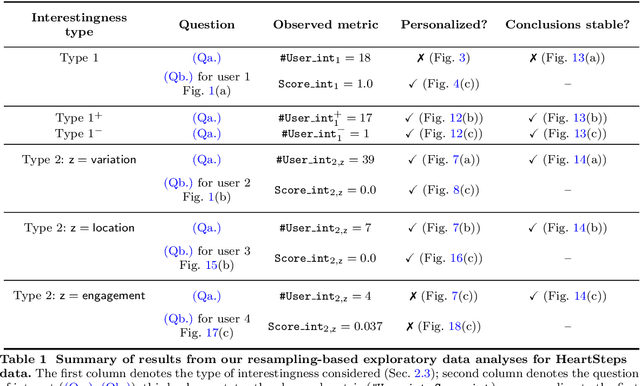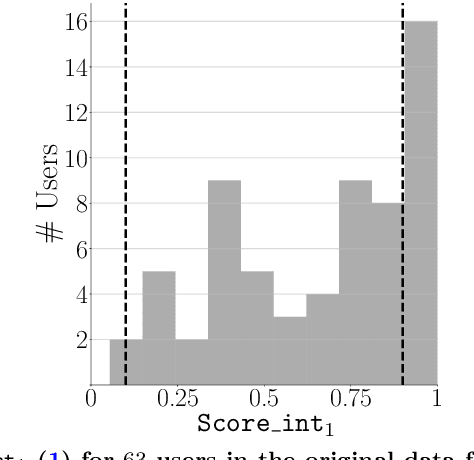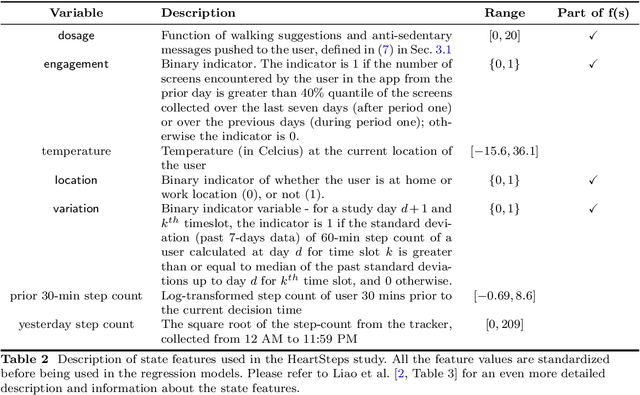Kelly Zhang
Did we personalize? Assessing personalization by an online reinforcement learning algorithm using resampling
Apr 24, 2023



Abstract:There is a growing interest in using reinforcement learning (RL) to personalize sequences of treatments in digital health to support users in adopting healthier behaviors. Such sequential decision-making problems involve decisions about when to treat and how to treat based on the user's context (e.g., prior activity level, location, etc.). Online RL is a promising data-driven approach for this problem as it learns based on each user's historical responses and uses that knowledge to personalize these decisions. However, to decide whether the RL algorithm should be included in an ``optimized'' intervention for real-world deployment, we must assess the data evidence indicating that the RL algorithm is actually personalizing the treatments to its users. Due to the stochasticity in the RL algorithm, one may get a false impression that it is learning in certain states and using this learning to provide specific treatments. We use a working definition of personalization and introduce a resampling-based methodology for investigating whether the personalization exhibited by the RL algorithm is an artifact of the RL algorithm stochasticity. We illustrate our methodology with a case study by analyzing the data from a physical activity clinical trial called HeartSteps, which included the use of an online RL algorithm. We demonstrate how our approach enhances data-driven truth-in-advertising of algorithm personalization both across all users as well as within specific users in the study.
Adversarially Regularized Autoencoders
Jun 29, 2018



Abstract:Deep latent variable models, trained using variational autoencoders or generative adversarial networks, are now a key technique for representation learning of continuous structures. However, applying similar methods to discrete structures, such as text sequences or discretized images, has proven to be more challenging. In this work, we propose a flexible method for training deep latent variable models of discrete structures. Our approach is based on the recently-proposed Wasserstein autoencoder (WAE) which formalizes the adversarial autoencoder (AAE) as an optimal transport problem. We first extend this framework to model discrete sequences, and then further explore different learned priors targeting a controllable representation. This adversarially regularized autoencoder (ARAE) allows us to generate natural textual outputs as well as perform manipulations in the latent space to induce change in the output space. Finally we show that the latent representation can be trained to perform unaligned textual style transfer, giving improvements both in automatic/human evaluation compared to existing methods.
 Add to Chrome
Add to Chrome Add to Firefox
Add to Firefox Add to Edge
Add to Edge